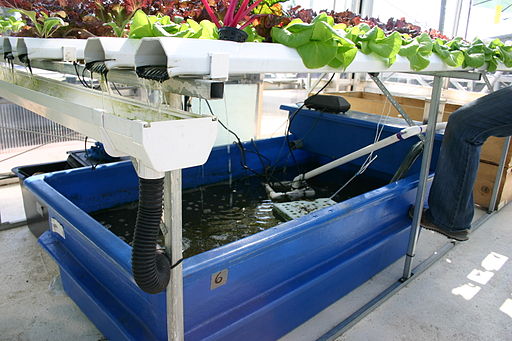Aquaponics is fast becoming a popular alternative to traditional agriculture and aquaculture. It is a unique method of cultivating plants and rearing fish in a way that benefits both while minimizing wastes and inputs. The system has a fascinating history, with ancient roots in the farming practices of the Aztecs.
The Aztecs were renowned for their innovative agricultural practices, including a farming system that combined fish rearing with plant cultivation. They called it chinampa, and it involved building rafts of floating plants and reeds on the surface of water bodies. They would then stock these rafts with fish and use the nutrient-rich water to irrigate crops.
Aquaponics takes this ancient technique and adapts it for contemporary use. In a modern aquaponics system, the fish waste enriches the water with essential nutrients that plants need to thrive. The plants, in turn, act as a natural water filter by absorbing the nutrients and purifying the water for the fish.
The best type of fish to use in an aquaponic system varies depending on the region and climate. Some of the most commonly used fish in aquaponics include tilapia, catfish, trout, and barramundi. The number of fish required will depend on the size of the system and the plants you choose to grow.
There are many plants that grow well in an aquaponic system, including: basil, kale, lettuce, mint, chives, tomatoes, cucumbers, and strawberries, just to name a few. The space required for each fish depends on the type of fish, but as a general rule, you want at least 25-30 gallons of water per fish.
Fish require a high-protein diet, but the type of food they need will depend on the species. You will need to research the dietary requirements of the fish you plan to grow to ensure they are receiving the proper nutrients.
Nutrients are essential in an aquaponic system, as they are what the plants rely on to grow. Typically, the waste produced by the fish is enough to provide the plants with the necessary nutrients. However, adding additional nutrients may be necessary if the plants aren’t growing well.
Choosing the best location for your aquaponics system is crucial. It needs to be somewhere stable and protected from temperature fluctuations. A south-facing location with access to natural light is ideal.
The set-up of an aquaponic system can be as straightforward or as complex as you choose. At its simplest, it involves three components: a fish tank, some form of water filtration, and a growing bed for plants. The water is pumped from the fish tank into the growing bed, where the plants absorb the excess nutrients. The water is then returned to the fish tank, having been cleansed by the plants.
You can eat both the fish and plants grown in an aquaponic system. However, it is essential to ensure that the fish are grown in a clean, disease-free environment, and that the plants are free from contaminants.
Aquaponics is a fascinating and versatile system that can benefit both fish and plants while minimizing waste. It offers an efficient way to grow fresh produce and high-quality fish in a sustainable and environmentally friendly manner. If you’re looking to start an aquaponics system, make sure to research carefully and find a setup that works best for your specific needs.
The Author:
Pioneerthinking.com – Ingredients for a Simple Life.
